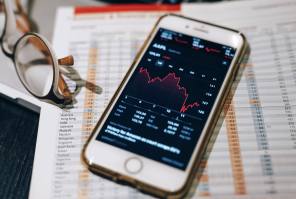
At the start of last year, emerging markets were a rare dark spot for equity returns. In the five years to 1 January 2016, the Investment Association (IA) Global Emerging Markets sector had lost 18.5 per cent. The Association of Investment Companies (AIC) grouping fared little better, shedding 15 per cent over the same period.
This was very much the turning point for the asset class. In the 20 months since that point, both sectors are up in the region of 50 per cent.
But investors have only gradually rekindled their affection for emerging markets – if, indeed, they had any in the first place. The risks of investing in the space were apparent even during the boom times in the early years of the century – volatility ensured it was a rocky ride even then.
Monthly sales for funds in the IA Global Emerging Markets sector have only once topped £150m since the start of 2016. June even saw an outflow of £110m – the largest withdrawal since 2015, and perhaps a sign that investors were starting to take money off the table once again.
Nonetheless, there are signs of a newfound resilience within the asset class. Developing market equities continued to rise in 2016 even as it became apparent that the US really was beginning to materially tighten monetary policy for the first time in a decade.
A trio of interest rate hikes from the US Federal Reserve between December 2016 and this June did not derail progress despite the historic correlation between tighter policy and poorer emerging market performance.
In the past, this link has reinforced the notion that easy money must be flowing for emerging markets to flourish, but the past 12 months have shown that this may not necessarily be the case.
However, it is true that the weakening of the US dollar this year has aided the asset class. As many emerging countries’ liabilities are denominated in dollars, a stronger greenback – typically associated with tightening policy from the US Federal Reserve – has weighed on performance in the past. But the dollar has slumped this year in spite of those rate hikes, giving a handy boost to emerging market sentiment.
The standouts
Table 1 shows the funds and trusts that have performed best over the past five years – a time period that encompasses the recent return to form after the tougher times of 2014/15 in particular.
The leading portfolio – the BlackRock Frontiers trust – is only loosely associated with the sector. As its name suggests, it focuses on frontier markets; those not deemed to be developed enough economically to be ranked as emerging markets. The trust’s performance underlines how the returns on offer from this space can outstrip better-known peers.
Inevitably, these rewards come with a commensurate increase in the level of risk involved.
Advocates of frontier markets claim the asset class is not simply a turbo-charged version of emerging market investing. The BlackRock trust’s returns provide mixed evidence. The portfolio fell 14.4 per cent in 2014/15, but this was better than the average drop for funds in the IA Global Emerging Markets sector.
Conversely, a return of 47.9 per cent in 2012/13, which was achieved when most developing market funds were still having to grind out returns, shows that the trust can produce returns well in excess of peers’ on certain occasions.
Fund firms’ emerging market teams tend to focus on one particular style of investing, with individual portfolios often differing only in terms of the size of investable companies. Even then, as Table 1 shows, there is plenty of doubling up when it comes to performance.
Changing construction
In truth, most leading emerging market funds are rather different to the developing market funds of yesteryear.
Many of those were focused on Brazil, Russia, India and China – the Bric countries – almost to the exclusion of other regions. In local currency terms, Brazil has led the way in the recent rebound, posting a 72 per cent return since the start of 2016.
India, which performed better than most during the tougher times since 2010, has become the quartet’s laggard with a return of 25.5 per cent.
Best and worst performers
But with Brazil, Russia and China all having suffered serious drawdowns over the past half-decade, the typical emerging market portfolio is more diverse than it once was.
There are two caveats to this, both of which have to do with index weightings. The first is that many funds do still retain significant exposures to the Brics.
The second-best fund in Table 1, Hermes Global Emerging Markets, holds more than 45 per cent of its portfolio in China, Hong Kong and Taiwan.
However, these regions account for 41 per cent of the MSCI Emerging Markets index, meaning that this overweight is not as significant as it may first appear.
The second caveat is that a broader emerging market focus has only served to highlight some of the flaws in index construction.
The MSCI index is home to countries ranging from Greece – since its downgrade in 2013 – to those that are in many ways too economically developed to be classed as “emerging”, such as South Korea.
Investors who are tracking these indices will have a level of diversity built in to their portfolio holdings. Alternatively, those who opt for active funds may benefit from a more independent approach to developing market investing.



